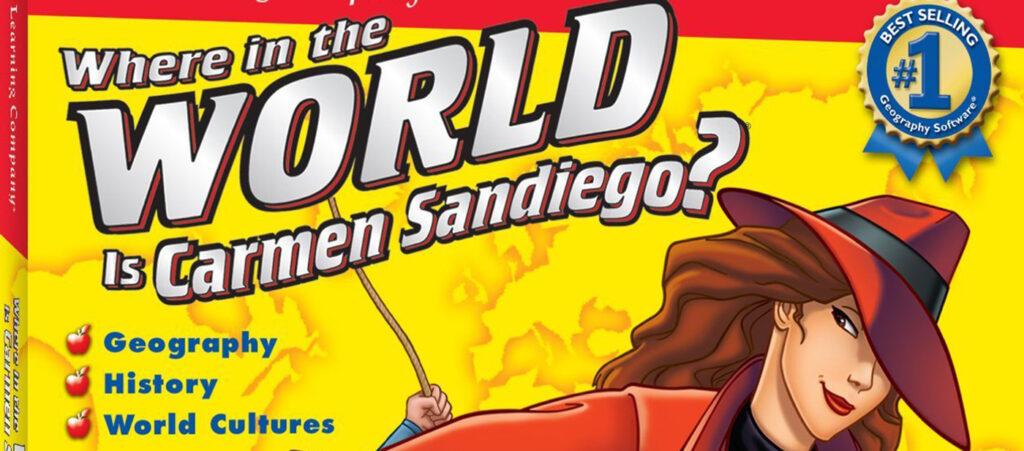The growing popularity of educational video games
Resources
Video games are incredibly popular. From the launch of Pong by Atari in 1972, through the golden age of arcade video games, through home console wars and the development of dedicated gaming PCs, right up to smart phones packing enough technology into your pocket to emulate a gaming experience that would have taken hardware the size of a heavy briefcase in the 90s – video games have had a direct line to the human mind for some time. The interactivity and escapism they can offer is hard to rival in other mediums.
There was a time when the attitude to video games was that it was a frivolous medium, devoid of cultural or significant value, but that attitude appears to have shifted with the digitisation of the educational game. Extensive evidence of children learning English through playing video games is now in the public consciousness, and numerous successful commercial games have built-in aspects designed to encourage critical thinking, decision making, and other useful skills.
What are the main features of an educational video game?
Fundamentally, an educational game is an example of gamification. Game mechanics are applied to a typically less playful task, in this case education, with the aim of making the experience fun. Educational games seek to help students with specific learning outcomes. An educational video game does this via interactive video game elements, and can contribute to a programme of game-based learning.
In classrooms and workplaces, these can be used by teachers or trainers to help reinforce learnings from traditional teaching methods. However, educational video games have been finding their way onto home computers and games consoles, sometimes as a conscious effort from parents as extra-curricular learning, but frequently on the merits of the game itself.
What is the most popular educational video game?
This is obviously a challenging question to answer. Many video games released for purely commercial reasons have educational elements. For example, Minecraft – the best selling video game of all time by some margin – may be the first exposure younger players have to managing resources, solving problems to advance their own campaign, as well as basic maths, with numerous examples of teachers appearing to achieve results by using it in class. They even released a Minecraft: Education Edition in 2016.
Games like The Sims and SimCity utilise similar planning features to the room planning software used by interior designers, and more advanced design tools like AutoCAD used by architects. While the game play might be simplified, it can condition a player to be more adept at adopting similar, more complex software in later life, and maybe even plant a seed of ambition in their mind.
One of the strongest examples of an educational video game was originally made by teachers for purely educational purposes in 1971, debuting to a single eighth grade history class, but commercially successful enough to sell more than 65 million copies.
The Oregon Trail example
Originally developed as a dice and card game to teach kids about westward expansion in the old West, even before the advent of the home computer, three teacher friends coded the first iteration of The Oregon Trail in BASIC over the course of 10 days.
The narrative of the game saw players assume the roles of pioneers, loading up a wagon with supplies and attempting the journey from Independence, Missouri to Oregon’s Willamette Valley. Bandits, broken wheels, animal attacks, general misfortune, and frequent bouts of dysentery are hurled randomly at the player’s party of characters, along with mini-games where they can hunt food and ford river crossings. Victory lay in reaching Willamette Valley before all your party members died, signalling the end of the game.
What lessons can we take from the best educational video games when making our own?

Students learn through educational video games by repeating the experience, and immersing themselves in the world of the game. When gamifying for educational purposes, you’re applying game-like mechanics to the learning process, so for example, in The Oregon Trail, students are encouraged to repeat the experience because it appeals to their desire for a challenge.
Make the experience repeatable by challenging students
Each time students play, success isn’t guaranteed. Students need to carefully manage their resources to get as many of their party as possible towards the end of the game. As well as teaching about pioneer life through the game’s historically accurate narrative, content, and scenarios, the game is also encouraging players to learn about resource management, and solve problems.
Additional, more arcade-style elements like hunting food, might not directly add to the learning element, but the variation in gameplay keeps students engaged through variety. Succeeding in these minor, more typical gameplay elements is also essential for succeeding – nothing in The Oregon Trail is an afterthought, and everything has an impact on a player’s success. In a good game, everything is relevant.
Tailor the game to the topic through careful planning and attention to detail
On the Drimify platform, you have the tools to create your own bespoke learning narrative with our Dynamic Path™ option. This allows you to use all of the games on the platform to customise a series of levels of gamified learning. Some could be pure content, some could include more traditional gameplay elements, and some could involve question and answer-style games.
The Dynamic Path™ format allows you to show a student’s progress through the game, as with each completed level, they travel across a fully customisable learning path. This could be adapted to show them crossing a geographical region, a specific timeline, or even a journey through the universe.
The authenticity of a bespoke learning experience lies in the details, so tailoring every aspect of your creation maximises its effectiveness as a teaching aid. For example, while they may not have been the main teaching points of the game, everybody who played The Oregon Trail as a kid knows that wagon maintenance pays for itself, and that dysentery can be deadly.
Top 5 educational video games
1. The Oregon Trail

Players assume command of a wagon filled with a party of pioneers. The player’s aim is to make their way to Oregon’s Willamette Valley, buying supplies, hunting for food, fording rivers, and desperately trying to keep as many members of their party alive as possible. If every party member dies before the Willamette Valley, they lose.
The game teaches students, or players, about westward expansion, giving them a relatable, albeit digital taste of what life was like on the frontier. It also teaches concepts like resource management and strategy.
2. Minecraft

In Minecraft players have the run of a virtually infinite 3D world. They can mine for raw materials, create tools, and build structures and machines. Players can choose to either fight hostile mobs, build structures to survive night attacks, or collaborate and team up with other players in the same world.
Minecraft can teach creativity, collaboration, project management, problem solving, and even the fundamentals of coding.
3. Rocksmith

Rocksmith is a video game that allows players to use a real electric guitar for the controller by plugging it into their console through a cable. Through playing the game, students with no musical background can learn to play the guitar or bass guitar without ever taking a proper lesson.
4. Kerbal Space Program

The Kerbal Space Program is a video game that allows players to take charge of a space programme for the eponymous alien race, the kerbals. Players assemble spacecraft that succeed or fail based on real physics to launch kerbal astronauts into space on defined missions: exploring moons and planets, constructing bases, and even space stations.
Kerbal space Program teaches players about science, technology, engineering and mathematics (STEM), and applies it to realistic space travel.
5. Carmen Sandiego Series

The Carmen Sandiego games began in 1985 with Where in the World is Carmen Sandiego? – players use their knowledge to track Carmen Sandiego’s villainous henchmen around the world until ultimately arresting Carmen Sandiego herself. The game spawned numerous subsequent editions, including Where in the USA is Carmen Sandiego? and Where in Europe is Carmen Sandiego?
While the Carmen Sandiego games initially started out teaching children about geography, the format was adapted to teach them about other subjects, such as history and mathematics.
Customise an educational learning path for your students with expert advice
Putting together a bespoke learning path made up of numerous levels and interactive modules is a great way to not only engage your students through a novel medium, but by being online, gives them the potential to play and learn actively on their own time. The experiences you can customise on the Drimify platform allows students to play on any modern device through a QR code or link, as they’re designed mobile first.
You don’t need any coding experience, as the Drimify platform is designed to make customising games easy, and our team of gamification experts can help you at every stage of your game making journey through our range of support packages.
Want to know more?





